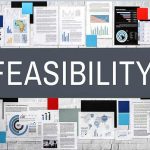Now, depending on your circumstances, justification will come in different forms. But essentially, you want to prove that this project will satisfy customer success criteria, has a chance of success, will deliver value, and is affordable.
· State your assumptions based on your customer need, then validate them. The Lean Startup gives great guidance on identifying and proving that your product is needed by your customers and will create value.
· Write, test, and validate your business plan. Now this looks nothing like the ones your bank or your business and finance major told you to produce. Don’t use them—they will be out of date before the ink is dry. Instead, check out the Business Model Canvas. This is essentially a short-form business plan that keeps your focus on your value proposition, your customers, revenue, and costs. Use it to validate if you have a business that will work.
· “I ignored this advice once and spent a long time writing a lengthy traditional 50 page business plan. It got me nowhere. All the assumptions I had made were unfounded, and all the projections I made couldn’t be validated. It was a painful and expensive experience that taught me to never do it again.”
· If you’re in a mature business with portfolios of projects being delivered in a complex environment, then financial modeling may be necessary. If you must, do this only after you’ve proven the above.
· Once you’ve built your MVP, there may be a case for creating a more traditional business plan—for example, if you have to go for funding or selection within your company’s portfolio of competing projects and resources. But this will be a business plan based on and informed by the tools used above. It will be lighter too.
· In any case, use these tools as living, breathing artifacts. Use them as your guide and bellwether. They are never static. Refer to them and revise them as your project or business evolves.
Once you have your justification and all your stakeholders are on board, you’ll be on fire.
The feasibility phase is typically performed once in the life of your project. You may find you revisit the vision and feasibility of the project, especially if your data, customers, market, or business indicate so. At the very least, they will be your guiding lights throughout.



Comments are closed